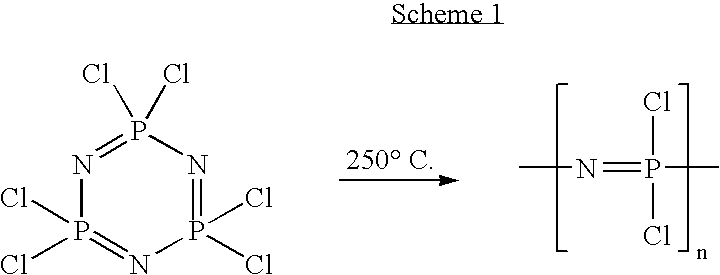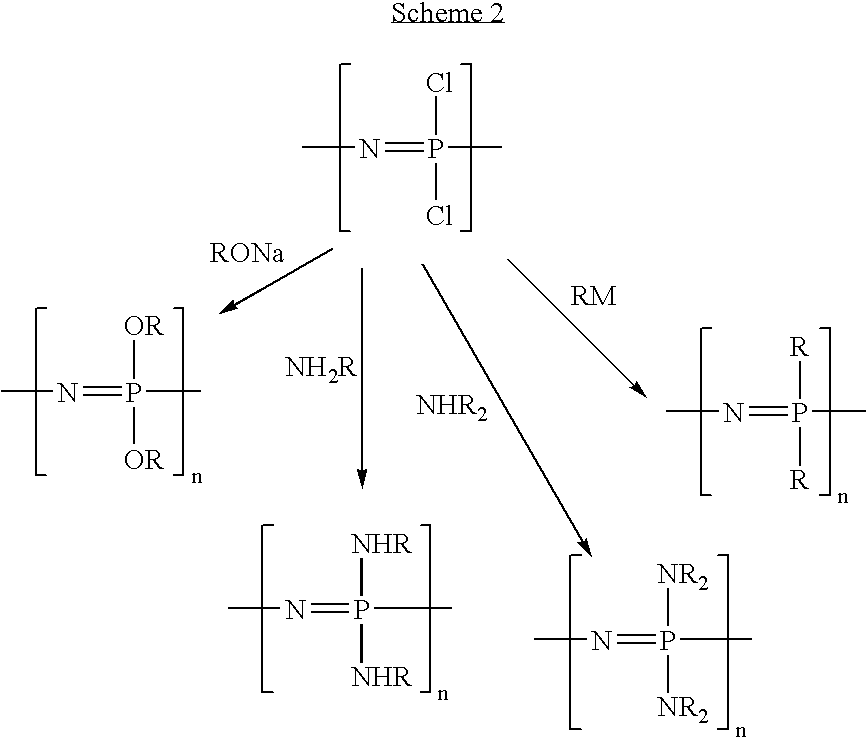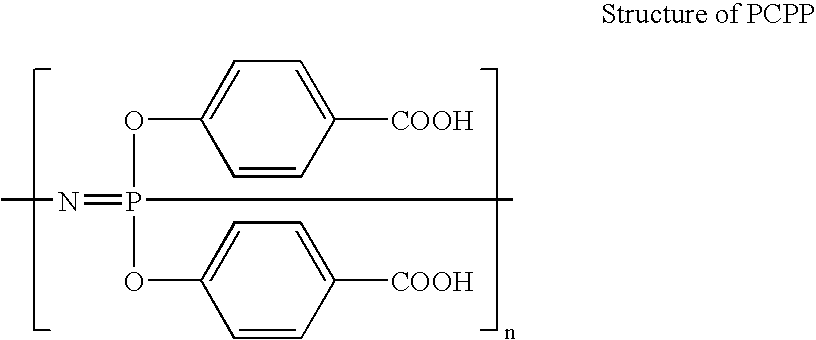Polymeric nanofibers for tissue engineering and drug delivery
- Summary
- Abstract
- Description
- Claims
- Application Information
AI Technical Summary
Benefits of technology
Problems solved by technology
Method used
Image
Examples
example 1
Manufacture of Non-Degradable Polyphosphazene Nanofibers
[0031]Electrospinning Apparatus:
[0032]The electrospinning setup used in this study consisted of a 20 mL glass syringe, blunt end needle of different gauge sizes, a ground electrode (copper plate covered with aluminum foil / interface fabric / Teflon coated sheet) placed at a predetermined distance from the needle tip. The syringe was fixed perpendicular to the collection screen and the polymer solution was allowed to flow under gravity. A Gamma High Voltage Supply ES40P -20W (0–40 kV, ES40P-20W; Gamma High Voltage Research, Florida) with a low current output was employed in the current study. A positive voltage was applied to the polymer solution in the glass syringe by attaching an alligator clip to the needle from the positive lead.
[0033]Different system parameters and processing variables affect the electrospinning process. The system parameters that could be modulated to optimize the fabrication method involve the molecular wei...
example 2
Manufacture of Degradable Polyphosphazene Nanofibers
Preparation of nanofibers of poly[bis(ethyl alanato)phosphazene (PNEA)
[0050]PNEA Synthesis:
[0051]PNEA was synthesized via the macromolecular substitution route of poly(dichlorophosphazene) according to Allcock et al. AG, Biomaterials 1994:15; 563–569. Briefly, PNEA was prepared by the nucleophilic substitution of poly(dichlorophosphazene) with a large excess of ethyl alanate. The structure of the polymer was confirmed by 31P NMR, 1H NMR and 13C NMR and the molecular weight .in terms of gel permeation chromatography (GPC). The number average molecular weight of the polymer used was 236,000 and weight average was 437,000 with a polydispersity of 1.9.
[0052]
[0053]Fabrication of PNEA Nanofibers:
[0054]As discussed above, the morphology and diameters of the nanofibers from PNEA can also be varied by varying parameters such as concentration / viscosity of the solution, molecular weight the polymer, electric potential, distance between the ne...
PUM
| Property | Measurement | Unit |
|---|---|---|
| diameter | aaaaa | aaaaa |
| diameter | aaaaa | aaaaa |
| diameters | aaaaa | aaaaa |
Abstract
Description
Claims
Application Information
 Login to View More
Login to View More - R&D
- Intellectual Property
- Life Sciences
- Materials
- Tech Scout
- Unparalleled Data Quality
- Higher Quality Content
- 60% Fewer Hallucinations
Browse by: Latest US Patents, China's latest patents, Technical Efficacy Thesaurus, Application Domain, Technology Topic, Popular Technical Reports.
© 2025 PatSnap. All rights reserved.Legal|Privacy policy|Modern Slavery Act Transparency Statement|Sitemap|About US| Contact US: help@patsnap.com



